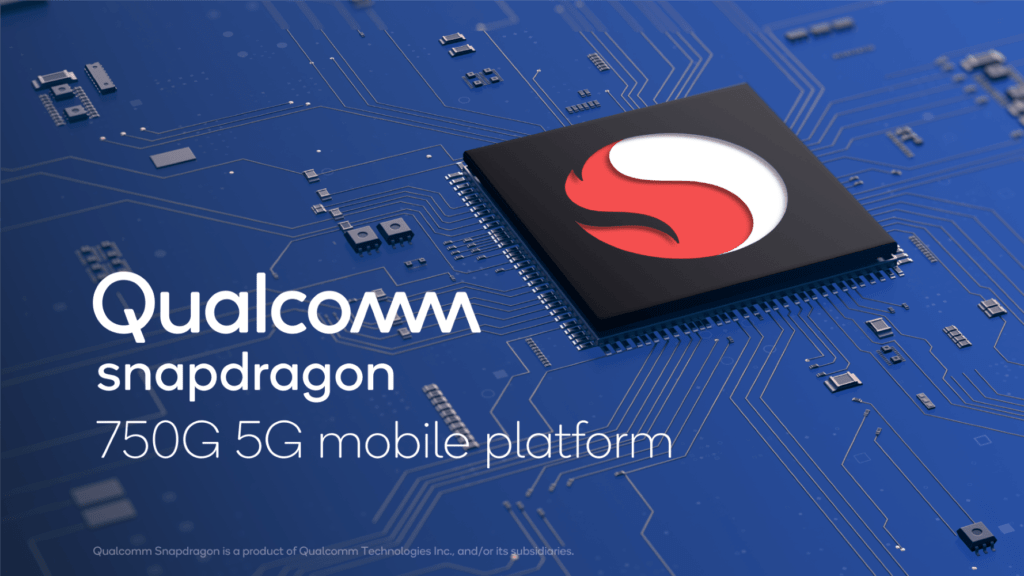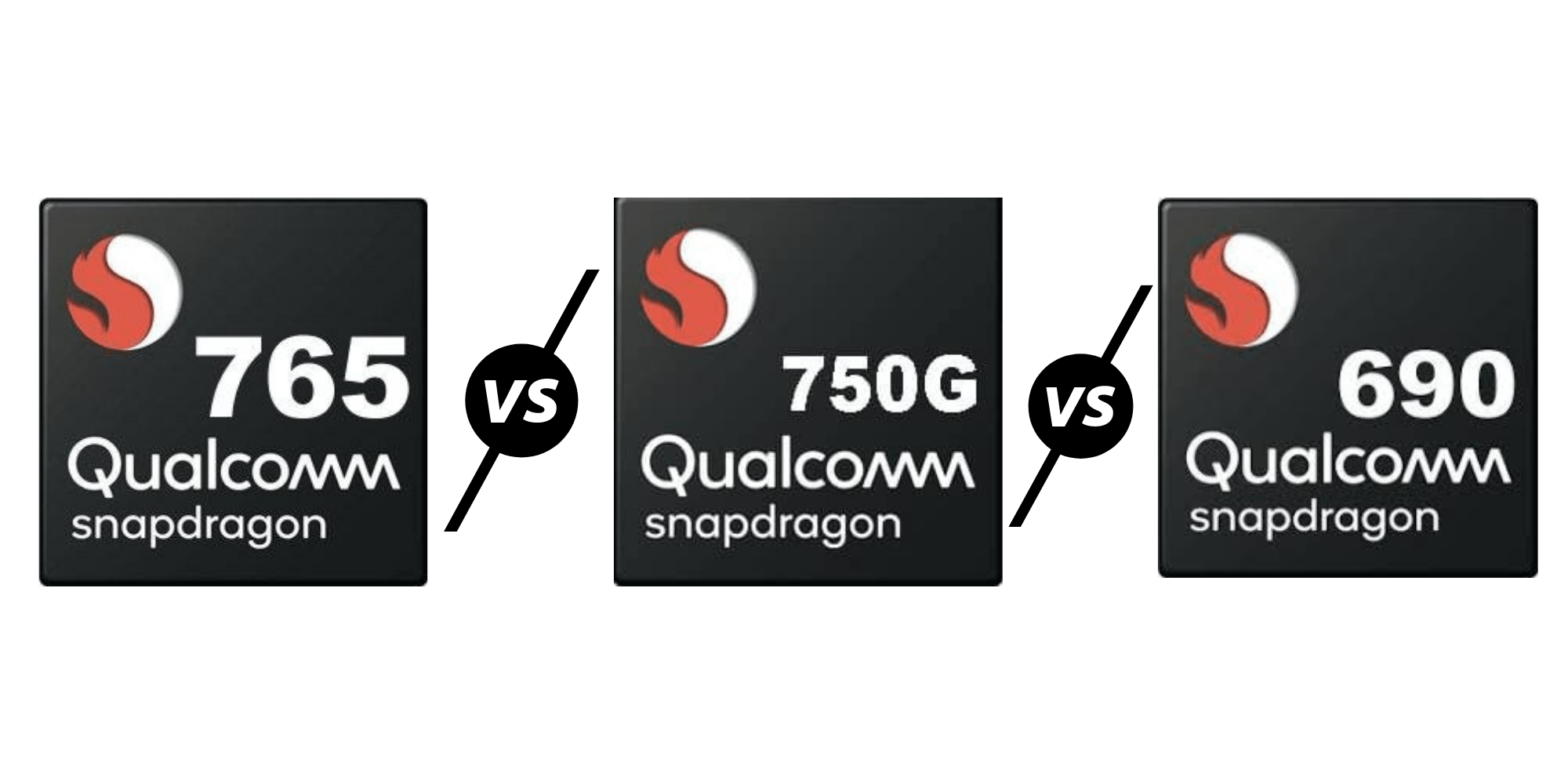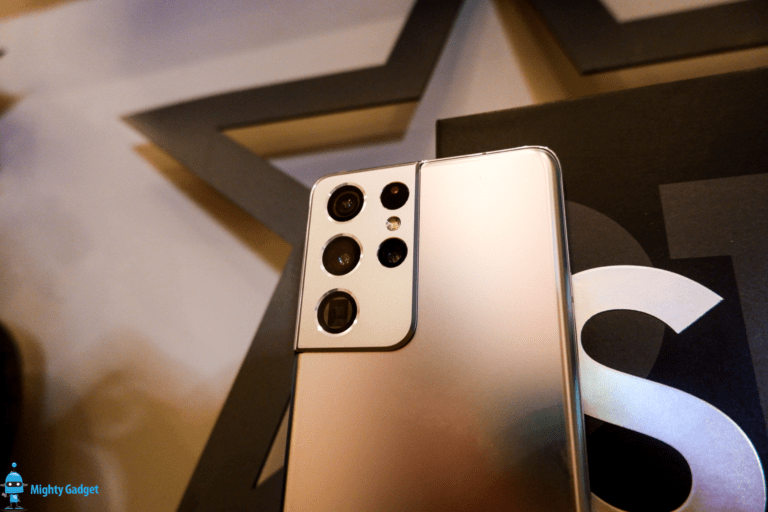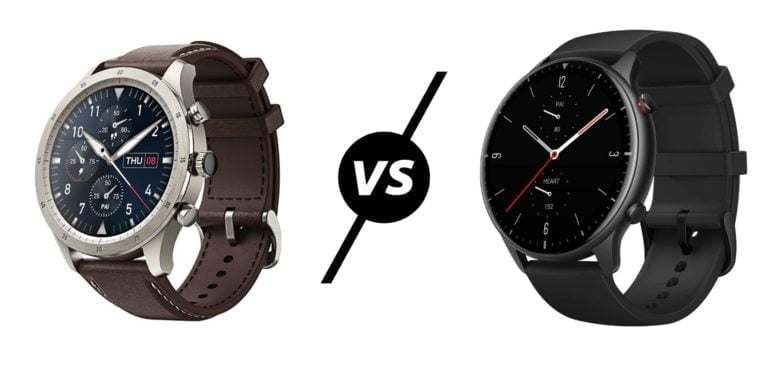Any links to online stores should be assumed to be affiliates. The company or PR agency provides all or most review samples. They have no control over my content, and I provide my honest opinion.
I feel like there have been a lot more chipset launches than normal this year. If it is not Qualcomm it is MediaTek.
Yesterday, Qualcomm took the wraps off their latest mid-range 5G contender, the Qualcomm Snapdragon 750G
As the name suggests this sits between the SD765G and SD730G but with its adoption of the new Arm Cortex A77 cores it will quite like offer superior performance than the SD765G in CPU intensive tasks.
The TLDR of this post is that the chipset is effectively the same as the Qualcomm Snapdragon 690 but with higher frequency cores, faster memory and a switch from the integrated Snapdragon X51 to the Snapdragon X52 which allows them to support mmWave 5G.
I have regularly criticised Qualcomm and MediaTek for rehashing old chipsets as new, but that’s normally for year old chipsets being passed off as something new. In this case, the SD690 is already new, and this newer model offers a bit more performance.
The switch from the 600 to 700 series is a little odd though. If it wasn’t for the switch of modem, this would effectively be a Snapdragon 690G.
Qualcomm Snapdragon 768G and Snapdragon 732G
For the sake of this comparison, I will ignore all the limited release customised variations such as the Snapdragon768G and the Snapdragon 732G. Both these chipsets are currently limited to just one phone each (both Xiaomi), and I suspect they were custom orders made by Qualcomm specifically for Xiaomi.
There is also the Snapdragon 720G which is newer and very similar to the SD730G but it is too messy to compare each minor difference.
Chipset Comparison

| SoC | Snapdragon 765G | Snapdragon 750G | Snapdragon 730G | Snapdragon 690 |
|---|---|---|---|---|
| CPU | 1x Cortex A76 @ 2.4GHz (765G) 1x Cortex-A76 @ 2.2GHz | 2x Cortex-A77 @ 2.2GHz | 2x Cortex-A76 @ 2.2GHz | 2x Kryo 560 (CA77) @ 2.0GHz |
| 6x Cortex-A55 @ 1.8GHz | 6x Cortex-A55 @ 1.8GHz | 6x Cortex-A55 @ 1.8GHz | 6x Kryo 560 (CA55) @ 1.7GHz | |
| GPU | Adreno 620 @ 625MHz +38% perf vs 730G | Adreno 619 +10% perf over 730G | Adreno 618 @ 575 MHz | Adreno 619L 60% perferformacne vs 675 |
| DSP / NPU | Hexagon 696 HVX + Tensor 5.4TOPS AI | Hexagon 694 HVX + Tensor 4TOPS AI | Hexagon 688 HVX + Tensor | Hexagon 692 HVX + Tensor |
| Memory Controller | 2x 16-bit 2133MHz LPDDR4X / 17.0GB/s | 2x 16-bit 2133MHz LPDDR4X / 17.0GB/s | 2x 16-bit 1866MHz LPDDR4X 14.9GB/s | 2x 16-bit 1866MHz LPDDR4X 14.9GB/s |
| ISP/Camera | Dual 14-bit Spectra 355 ISP 1x 192MP or 36MP with ZSL 2x 22MP with ZSL | Dual Spectra 355L ISP 48MP single 32+16MP dual | Dual Spectra 350 ISP 1x 36MP with ZSL 2x 22MP with ZSL | Spectra 355L 48MP single 32+16MP dual |
| Integrated Modem | Snapdragon X52 LTE Category 24/22 5G NR Sub-6 4x4 100MHz mmWave 2x2 400MHz | Snapdragon X52 LTE Category 24/22 5G NR Sub-6 4x4 100MHz mmWave 2x2 400MHz | Snapdragon X15 LTE Category 15/13 | Snapdragon X51 LTE Category 24/22 5G NR Sub-6 |
| Fabrication Process | Samsung 7nm EUV (7LPP) | Samsung 8nm (8LPP) | Samsung 8nm (8LPP) | Samsung 8nm LPP |
CPU
The Arm Cortex A77 CPU was first implemented on the flagship SD865, this is now rolling down to the lower end. So we are now in that confusing transition where you have some chipsets lower down the ladder, looking better specced than the higher end models.
Both the SD690 and SD750G have the same CPU configuration but the SD750G has a 10% boost on its to A77 cores giving:
- SD750G
- 2x Cortex-A77 at 2.2GHz
- 6x Cortex-A55 at 1.8GHz
- SD690G
- 2x Cortex-A77 at 2.0GHz
- 6x Cortex-A55 at 1.7GHz
Then the older models are using the Cortex A76 cores
- SD765G
- 1x Cortex-A76 at 2.4GHz
- 1x Cortex-A76 at 2.0GHz
- 6x Cortex-A55 at 1.8GHz
- SD730G
- 2x Cortex-A76 at 2.2GHz
- 6x Cortex-A55 at 1.8GHz
I feel like it is time that the Cortex-A55 is due an upgrade!
GPU
Things are less clear for the GPU as it is just a generically named Adreno GPU which Qualcomm say is x% better than another GPU.
- SD750G – Adreno 619 +10% performance over 730G
- SD690 – Adreno 619L – 60% more performance than the SD675, no idea how the L model differs from the normal Adreno 619
- SD765G – Adreno 620 +38% performance over 730G
- SD730G – Adreno 618 – no performance claims
Memory
One other small difference is that the SD765G and SD750G both use faster 2x16bit 2133MHz memory vs 1866MHz
Modem
With the Snapdragon765G and SD750G, they both use the integrated Snapdragon X52 modem which offers 5G NR Sub-6 4×4 100MHz and mmWave 2×2 400MHz
That allows a theoretical download speed of 3700 Mbps and uploads of 1600 Mbps
The Snapdragon 690 has the Snapdragon X51 which can only do 5G NR Sub-6 giving it 2500Mbps and 1200Mbps speeds.
The SD730G is 4G only with the older Snapdragon X15 LTE modem.
In reality, there will not be many times that the X52 with its mmWave will offer any benefit over the X51. mmWave has very poor penetration and is best used in dense urban cores and venues with large crowds. By the time Covid has cleared and stadiums and city centres roll this out, you will probably be using a phone with a newer chipset.
Phones with the Qualcomm Snapdragon 750G
This has only just been launched but it is rumoured that Samsung may be the first company to use the chipset with the Samsung Galaxy A42 5G, either that or it will use the SD690.
Benchmarks – Geekbench
No phones means no official benchmarks.
Back in August a leaked Geekbench benchmark of the Samsung Galaxy A42 5G came out with scores of 619/1799.
We don’t know which chipset that phone is using, either the SD690 or SD750G but the result is promising. The single-core score is a touch higher while the multi-core score is a little lower than the SD765G on the Realme X50 which achieved 612/1899.
Overall
The chipset doesn’t offer much over the SD690 but both chipsets look excellent giving consumers and affordable entry into 5G and offering more than enough performance for most people.
I am James, a UK-based tech enthusiast and the Editor and Owner of Mighty Gadget, which I’ve proudly run since 2007. Passionate about all things technology, my expertise spans from computers and networking to mobile, wearables, and smart home devices.
As a fitness fanatic who loves running and cycling, I also have a keen interest in fitness-related technology, and I take every opportunity to cover this niche on my blog. My diverse interests allow me to bring a unique perspective to tech blogging, merging lifestyle, fitness, and the latest tech trends.
In my academic pursuits, I earned a BSc in Information Systems Design from UCLAN, before advancing my learning with a Master’s Degree in Computing. This advanced study also included Cisco CCNA accreditation, further demonstrating my commitment to understanding and staying ahead of the technology curve.
I’m proud to share that Vuelio has consistently ranked Mighty Gadget as one of the top technology blogs in the UK. With my dedication to technology and drive to share my insights, I aim to continue providing my readers with engaging and informative content.







